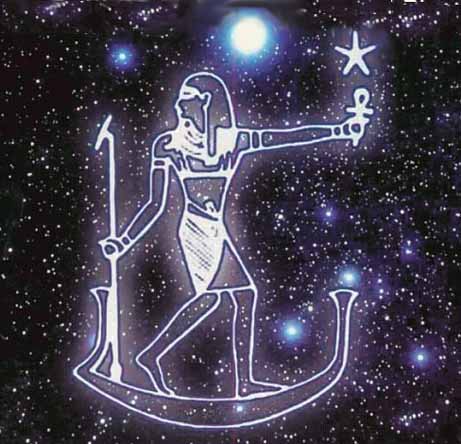
Sirius was a very important star to the ancient Egyptians, who called it the Star of Isis or the Nile Star. About 5,000 years ago, the helical rising of Sirius occurred earlier, around June 25.

When the Egyptians saw Sirius rising just before the Sun they knew it would soon be time for the flooding, or inundation of the Nile River, around which all Egyptian life was woven. They depended upon the flooding of the Nile for the fertility of their lands.
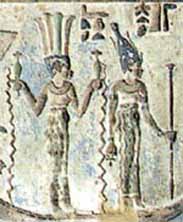
It was up to the Egyptian priests, who attended to the calendar, to sight the first rising of Sirius. At the ancient temple of Isis-Hathor at Denderah, is a beautiful statue of Isis, located at the end of an aisle flanked by large columns. The statue was oriented to the rising of Sirius and priests would place a jewel in the goddess' forehead so that the light from the returning star would fall on the gem.
When the Egyptian priests saw the light of Sirius upon the gem on the statue of Isis they would announce to the people that the New Year had begun.
There is an inscription on the temple which states: "Her majesty Isis shines into the temple on New Year's Day, and she mingles her light with that of her father Ra on the horizon." Ra was the Egyptian Sun god.

According to Lockyear, in 3285 BCE Sirius had replaced Draconis as the star marker of the Summer Solstice and the beginning of the Egyptian New Year.
The star was used as an orientation point especially at Thebes and became identified with Isis.
The Temple of Isis-Hathor at Denderah constructed in 700 BCE is oriented to this star through the northern opening of the central passage. On the temple wall is a zodiac square which shows the star.
This is the period of time Sirius disappears from the sky - sequenced in the myth when Isis is hiding until the birth of her son, Horus - eventually the star reappears after Horus is born - resurrection. It is time!
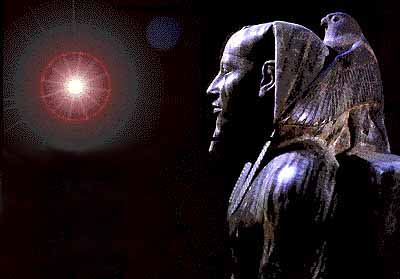
The first time each year in which Sirius appears is called the heliacal rising of Sirius.
In Egypt this would be in the month of Thoth.
It would occur close to the Summer solstice and the time of the Nile's inundation.
The helical rising marked the beginning of the New Year which was held to be controlled by Isis.
Thoth - Link With Sirius
Sirius Mythology - Zep Tepi
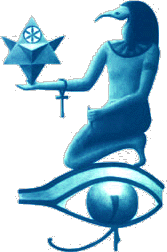
Star - Star Tetrahedron
Thoth The Scribe used sacred geometry -
geometry of the stars
to write our program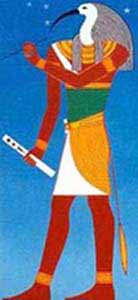
placing coded messages in the heavens for you to find.
Creators - Guardians - 'God/Dog' - Dog Star - would live beyond the stars in a higher realm of consciousness.
They would return 'out of the blue' - at the time of the flooding - the return to the collective unconscious.
And you will move through the Sacred Geometry - SG - of the Stargate

with all the colors of the rainbow - rainbow bridge.
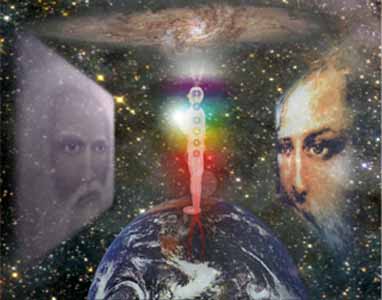

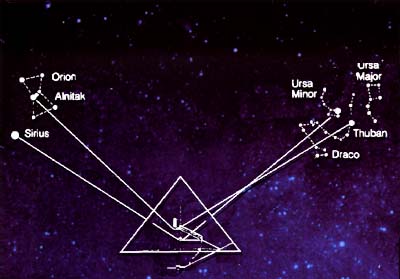
Sirius was revered as the Nile Star, or Star of Isis, by the ancient Egyptians. Its annual appearance just before dawn at the Summer Solstice, June 21, heralded the coming rise of the Nile, upon which Egyptian agriculture depended. This helical rising is referred to in many temple inscriptions, where the star is known as the Divine Sepat, identified as the soul of Isis.
In the temple of Isis-Hathor at Dedendrah, Egypt, appears the inscription, "Her majesty Isis shines into the temple on New Year's Day, and she mingles her light with that of her father on the horizon."
The Arabic word Al Shi'ra resembles the Greek, Roman, and Egyptian names suggesting a common origin in Sanskrit, in which the name Surya, the Sun God, simply means the "shining one."
For 35 days before, and 35 days after the Sun conjuncts it on July 4, the star Sirius is hidden by the Sun's glare.
The ancient Egyptians refused to bury their dead during the 70 days Sirius was hidden from view, because it was believed Sirius was the doorway to the afterlife, and the doorway was thought to be closed during this yearly period.
Located just below the Dog Star there exists a constellation called Argo, the Ship. Astrologically that area in the sky has been known as the river of stars which is a gateway to the ocean of higher consciousness.
The dog Sirius is one of the watchmen of the Heavens, fixed in one place at the bridge of the Milky Way, keeping guard over the abyss into incarnation.
The Dog Star is a symbol of power, will, and steadfastness of purpose, and exemplifies the One who has succeeded in bridging the lower and higher consciousness.
The Chinese knew this place as the bridge between heaven and hell, the bridge of the gatherer, the judge.
In the higher mind are gathered the results of the experiences of the personality.
Between each life the soul judges its past progress, and the conditions needed to aid its future growth. As long as it is attached to desire, sensation, and needs experiences, it takes a body.
The soul cannot pass over the "bridge" until it is perfected.
The association of Sirius with a celestial dog has been consistent throughout the classical world; even in remote China, the star was identified as a heavenly wolf.
In ancient Chaldea (present day Iraq) the star was known as the "Dog Star that Leads," or it was called the "Star of the Dog."
In Assyria, it was said to be the "Dog of the Sun."
In still older Akkadia, it was named the "Dog Star of the Sun."
In Greek times Aratus referred to Canis Major as the guard-dog of Orion, following on the heels of its master, and standing on its hind legs with Sirius carried in its jaws. Manilius called it the "dog with the blazing face." Canis Major (large dog) seems to cross the sky in pursuit of the hare, represented by the constellation Lepus under Orion's feet. The concept of the mind slaying the real can be seen in the tales which relate the dog as the hunter and killer - the hound from hell.
Mythologists such as Eratosthenes said that the constellation represented Laelaps, a dog so swift that no prey could escape it. Laelaps had a long list of owners.
One storysays it is the dog given by Zeus to Europa, whose son Minos, King of Crete passed it on to Procris, daughter of Cephalus. The dog was presented to Procris along with a javelin that could never miss. Ironically Cephalus accidentally killed her with it while out hunting.
Cephalus inherited the dog, and took it with him to Thebes, north of Athens, where a vicious fox was ravaging the countryside. The fox was so swift that it was destined never to be caught - yet Laelaps the hound was destined to catch whatever it pursued. Off they went, almost faster than the eye could follow, the inescapable dog in pursuit of the uncatchable fox.
At one moment the dog would seem to have its prey within grasp, but could only close its jaws on thin air as the fox raced ahead of it again. There could be no resolution of such a paradox, so Zeus turned them both to stone and the dog he placed in the sky without the fox.
There is a remarkable analogy in the Chinese double meaning of the word Spirit and the word Sing (star). The words for soul and essence in Chinese, Shin and Sting, are often interchangeable, as they are in the English language. It is said that the fixed stars, and their domain, contain the essences or souls of matter ... a living soul is a higher essence of matter, and when evolved may also be called a star. These stars and essences become gods. Like souls, stars are regarded as having divine attributes. Stars look down from regions of chaotic, violent, purity on the world of humanity and influence the energies of mankind invisibly, but most powerfully. - Sirius, The God-Dog Star
Until the Aswan High Dam was built, Egypt received a yearly inundation - an annual flood - of the Nile. The ancient Egyptians did not realise this, but the flood came due to the heavy summer rains in the Ethiopian highlands, swelling the different tributaries and other rivers that joined and became the Nile. This happened yearly, between June and September, in a season the Egyptians called akhet - the inundation. This was seen by the Egyptians as a yearly coming of the god, Hapi bringing fertility to the land.
The first signs of the inundation were seen at Aswan by the end of June, reaching its swelling to its fullest at Cairo by September. The flood would then decrease in size around two weeks later, leaving behind a deposit of rich, black silt. The amount of silt left behind due to the height of the Nile determined the amount of crops that the Egyptians could grow - if the inundation was too low, it would be a year of famine.
The Egyptians learned a method of measuring the height of the Nile known as the Nilometre.
Although all Nilometres used by the Egyptians had a single obvious purpose, to mark the highest point of Inundation, they were constructed in one of three different formats -- a slab or pillar, a well or a series of steps. All three were calibrated using the same unit of measurement, the cubit; the Egyptians broke the cubit into smaller units, which allowed them to keep remarkably accurate records, perhaps more accurate than would have been warranted for the purposes of merely agriculture and taxation. - Egypt: The Inundation Article Continued - Also This Website
Egypt: The dog days are defined as the period from July 3 through Aug. 11 when the Dog Star, Sirius, rises in conjunction (or nearly so) with the Sun. As a result, some felt that the combination of the brightest luminary of the day (the Sun) and the brightest star of night (Sirius) was responsible for the extreme heat that is experienced during the middle of the summertime. - Dog Days and the Star Behind the Phrase Space.com
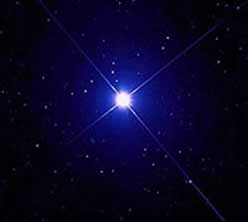




0 comments:
Post a Comment